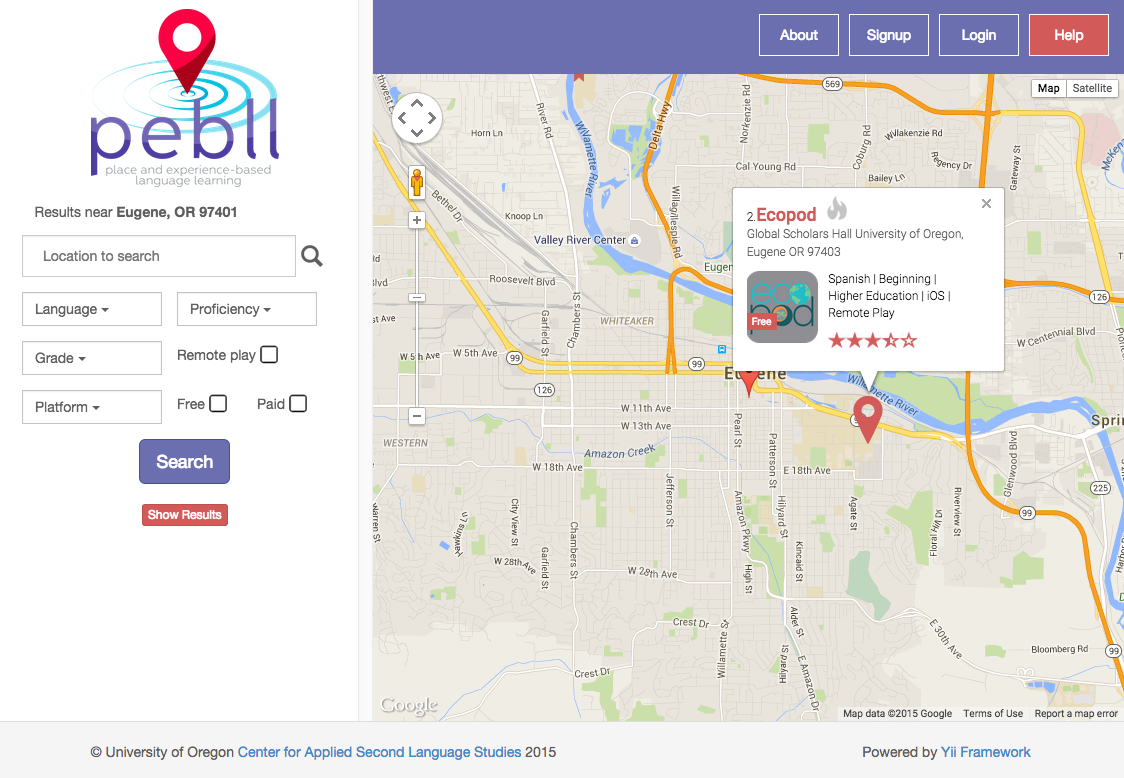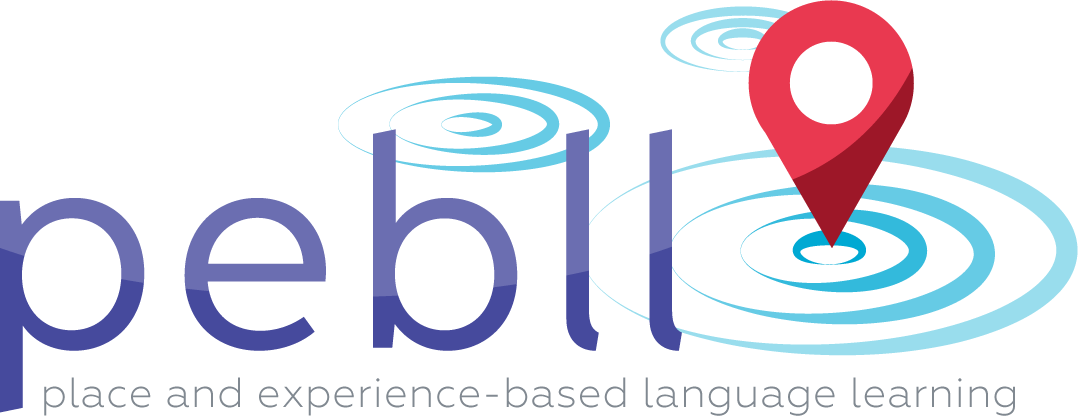Contents
Content Type: 1
Title: Maker Spaces: What Can They Do for ELL Students?
Body:
From http://blogs.edweek.org/edweek
Peter DeWitt shares his experience having his ELL students create video games using Scratch and the effect it had on their confidence, language abilities, and cognitive development.
Access this article at http://blogs.edweek.org/edweek/finding_common_ground/2015/06/maker_spaces_what_can_they_do_for_ell_students.html
Source: Education Week
Inputdate: 2015-07-02 19:00:26
Lastmodifieddate: 2015-07-06 03:19:23
Expdate:
Publishdate: 2015-07-06 02:15:01
Displaydate: 2015-07-06 00:00:00
Active: 1
Emailed: 1
Isarchived: 0
Content Type: 1
Title: Learning Stations in High School
Body:
Recently an FLTEACH listserv user described the way she uses learning stations in a high school setting and asked for more ideas. Read the thread by going to https://listserv.buffalo.edu/cgi-bin/wa?A2=ind1506&L=FLTEACH&P=R20870&I=-3&d=No+Match%3BMatch%3BMatches and then clicking on “Next” by “By Topic.”
Source: FLTEACH
Inputdate: 2015-07-02 19:01:05
Lastmodifieddate: 2015-07-06 03:19:23
Expdate:
Publishdate: 2015-07-06 02:15:01
Displaydate: 2015-07-06 00:00:00
Active: 1
Emailed: 1
Isarchived: 0
Content Type: 1
Title: Using Realia
Body:
From https://www.teachingenglish.org.uk
Realia are real-life objects that you can use in your classroom to improve your students’ learning. Read Rachael Roberts’ suggestions for how you can use realia in your classroom in this recent article: https://www.teachingenglish.org.uk/blogs/rachael-roberts/rachael-roberts-realia
Source: British Council
Inputdate: 2015-07-02 19:01:35
Lastmodifieddate: 2015-07-06 03:19:23
Expdate:
Publishdate: 2015-07-06 02:15:01
Displaydate: 2015-07-06 00:00:00
Active: 1
Emailed: 1
Isarchived: 0
Content Type: 1
Title: Make an Infographic Syllabus
Body:
Do your students actually read your syllabus? Consider presenting it in the form of an infographic. Here are two blog posts, one from last year and one recent, from teachers who have made infographic syllabuses.
Make an Interactive Infograph Syllabus http://www.pblinthetl.com/2014/08/make-interactive-infograph-syllabus.html
My infographic syllabus! https://mmefarab.wordpress.com/2015/06/20/my-infographic-syllabus/
Source: Various
Inputdate: 2015-07-02 19:02:14
Lastmodifieddate: 2015-07-06 03:19:23
Expdate:
Publishdate: 2015-07-06 02:15:01
Displaydate: 2015-07-06 00:00:00
Active: 1
Emailed: 1
Isarchived: 0
Content Type: 1
Title: Understanding Errors in Foreign Language Writing
Body:
From https://gianfrancoconti.wordpress.com
Dr. Gianfranco Conti, Spanish and French teacher and blogger, shares an adaptation of a chapter from his doctoral thesis about errors in second language writing from a cognitive psychology perspective. The post is available here: https://gianfrancoconti.wordpress.com/2015/07/02/1801/
Source: The Language Gym
Inputdate: 2015-07-02 19:02:57
Lastmodifieddate: 2015-07-06 03:19:23
Expdate:
Publishdate: 2015-07-06 02:15:01
Displaydate: 2015-07-06 00:00:00
Active: 1
Emailed: 1
Isarchived: 0
Content Type: 1
Title: New Black Box Podcast: Compelling Input
Body:
From https://senorfernie.wordpress.com
Albert Fernandez, an elementary and middle school Spanish teacher and blogger, brings us the latest installment of the Black Box podcast series. Mr. Fernandez unpacks a 2013 article by Stephen Krashen, “The Compelling (Not Just Interesting) Input Hypothesis.”
Learn some background about Dr. Krashen’s original hypotheses and then learn more in-depth about a refinement of those early ideas, the importance of compelling input, at https://senorfernie.wordpress.com/2015/07/01/all-they-need-is-accurate-input-right-wrong/
The Black Box is a collection of video podcasts and other media resources designed to address the great disconnect in world language teaching: the lack of effective communication between researchers investigating how people learn language and the teachers working to help those people develop communicative language skills.
You can learn more about the series and access all of the episodes created so far at http://musicuentos.com/blackbox/
Source: senorfernie
Inputdate: 2015-07-02 19:03:44
Lastmodifieddate: 2015-07-06 03:19:23
Expdate:
Publishdate: 2015-07-06 02:15:01
Displaydate: 2015-07-06 00:00:00
Active: 1
Emailed: 1
Isarchived: 0
Content Type: 1
Title: TED-Ed Lesson: The Benefits of a Bilingual Brain
Body:
From http://ed.ted.com
Here is a recently-created TED-Ed lesson about the benefits of a bilingual brain, by Mia Nacamulli. Watch a video and then work through supporting materials at http://ed.ted.com/lessons/how-speaking-multiple-languages-benefits-the-brain-mia-nacamulli
Source: TED-Ed
Inputdate: 2015-07-02 19:04:22
Lastmodifieddate: 2015-07-06 03:19:23
Expdate:
Publishdate: 2015-07-06 02:15:01
Displaydate: 2015-07-06 00:00:00
Active: 1
Emailed: 1
Isarchived: 0
Content Type: 3
Title: A Top Ten Checklist for Best Practices in Language Learning
Body:
By Julie Sykes, CASLS Director
As we begin our eight-week series focused on curricular development and course planning, it is useful to revisit the fundamentals of the teaching and learning of languages. Drawing on a number of highly useful taxonomies designed to characterize best practices, this top ten list is designed as a quick check-in for practitioners wishing to quickly re-focus and reflect during the planning process.
- The curriculum demonstrates evidence of backward design and proficiency-oriented instruction.
- Salient, defined performance objectives drive curriculum development and are used to guide students through their learning process.
- Course outcomes align with national standards.
- Classroom lessons are designed to include ample opportunity for meaningful input, analysis, and contextualized output.
- Grammar instruction occurs in the service of meaning. This principle is reflected in student learning outcomes, lesson plans, and performance assessments.
- Pragmatic patterns related to the expression and interpretation of meaning are integrated throughout the curriculum.
- Literacy development is present throughout the curriculum and includes traditional genres as well as reading and writing tasks critical to successful interaction with emerging digital contexts.
- Class structures are designed to facilitate a positive classroom environment with ample opportunity for instructor-student, peer-to-peer, and peer-to-group interactions.
- Goal setting and learner reflection are an integrated component of the curriculum planning and daily lesson plans so learners are always aware of where they are and where they are going.
- Feedback mechanisms are designed to give varied types of information and assessment and evaluation tasks are proficiency-oriented with direct ties to classroom learning.
This checklist is designed as an accessible, quick check-in tool. In the coming weeks our Topic of the Week articles will address these practices in more detail.
Source: CASLS Topic of the Week
Inputdate: 2015-07-06 11:37:34
Lastmodifieddate: 2015-07-13 03:23:41
Expdate:
Publishdate: 2015-07-13 02:15:01
Displaydate: 2015-07-13 00:00:00
Active: 1
Emailed: 1
Isarchived: 0
Content Type: 5
Title: Place- and Experience-based Language Learning Database Launches
Body:
Looking for place-based experiences to use with your language learners? Want to find out if there is a target language scavenger hunt available in a place you are visiting? Check out CASLS’ newest database – pebll (pronounced pebble). In the database you are able to search for place-based curricular materials by location, level, language, and type. The site also connects you with the developers and provides information on how to access the mobile experiences.

Interested in submitting your own resource to be curated in the pebll database? Click on the link below to begin the submission process.
https://oregon.qualtrics.com/SE/?SID=SV_3BPBMwF2zMNLRWt
Source: CASLS Spotlight
Inputdate: 2015-07-08 11:05:31
Lastmodifieddate: 2015-07-20 03:20:19
Expdate:
Publishdate: 2015-07-20 02:15:01
Displaydate: 2015-07-20 00:00:00
Active: 1
Emailed: 1
Isarchived: 0
Content Type: 3
Title: Designing Backwardly v. Backwards Design
Body:
Stephanie Knight is the Language Technology Specialist for CASLS at the University of Oregon. Her interests are in second language acquisition, innovative pedagogy, curriculum development, and increasing access to high-level course work for traditionally underrepresented populations of students. She has taught Spanish at both the high school and university level. She earned her Master's in Latin American Studies from the University of New Mexico in 2009.
Backwards design is one of the ultimate buzzwords in present academic spheres. Talk to the teachers who use it, and it becomes somewhat of a silver bullet for curricular planning. Talk to the teachers who are still learning it, and it can feel like yet another initiative layered upon their already heavy burdens. It is celebrated and incorporated into current frameworks such as Project-Based Learning, Wiggins and McTighe’s Understanding by Design (2005), and International Baccalaureate unit planners. However, does backwards design merit this attention?
In order to answer this question, consider the following example:
After hearing about backwards design, Mr. Johnson writes a summative assessment incorporating all key vocabulary and grammar from a few chapters in his Spanish textbook and then carefully builds his classroom days around student acquisition of this content. As he teaches, he notices that student engagement is unchanged. Summative assessment scores only show negligible improvement, and Mr. Johnson doesn’t know if backwards design is worth the extra planning that it entails.
What did not work for Mr. Johnson?
Essentially, though Mr. Johnson designed backwardly, he did not engage in backwards design. In order to understand why, one must understand Graff (2011) and his analysis of what Shulman (1986) describes as curricular knowledge. Curricular knowledge is the knowledge needed to undertake both vertical and horizontal planning. Simply put, awareness of overarching concepts and topics in other subject areas is essential to building relevance for students. Consider a different scenario:
Mr. Johnson discovers that in about a month, the math teacher is going to cover percentages and ratios and the history teacher is going to cover the Mexican-American War. He realizes that both topics are related to the concept of change occurring over time, and he decides that he wants his own students to explore that concept through the creation of a multimedia presentation that documents the history of an immigrant family from the local community. Using the context of the history of Mexican Immigration to the United States, he helps students acquire grammar (past-tense verbs) and vocabulary (government words) via discussions, videos, and readings. Students add flavor to the classroom by discussing how the Mexican-American war impacted immigration and how the percentage of immigrants making up the United States’ population has changed over time. In their summative assessment, Mr. Johnson notes that his students finally care more about communication than memorization.
The experience of teachers like Mr. Johnson shows that 1) teaching to the test is not backwards design as it was meant to be implemented and 2) effective backwards design requires intentional planning in which one’s subject matter is taught at a conceptual level. Teaching in such a way serves to ignite learning within a classroom and to encourage students to think beyond the textbook and into the real-world application of the information that they are learning.
References
Graff, N. (2001). “An Effective and Agonizing Way to Learn”: Backwards Design and New Teachers’ Preparation for Planning Curriculum. Teacher Education Quarterly, Summer 2011, 151-168.
Shulman, L.S. (1986). Those who understand: Knowledge growth in teaching. Educational Researcher, 15 (2), 4-14.
Wiggins, G. & McTighe, J. (2005). Understanding by design (2nd ed.). Upper Saddle River, NJ: Prentice Hall.
Source: CASLS Topic of the Week
Inputdate: 2015-07-08 11:25:12
Lastmodifieddate: 2015-07-20 03:20:19
Expdate:
Publishdate: 2015-07-20 02:15:01
Displaydate: 2015-07-20 00:00:00
Active: 1
Emailed: 1
Isarchived: 0

